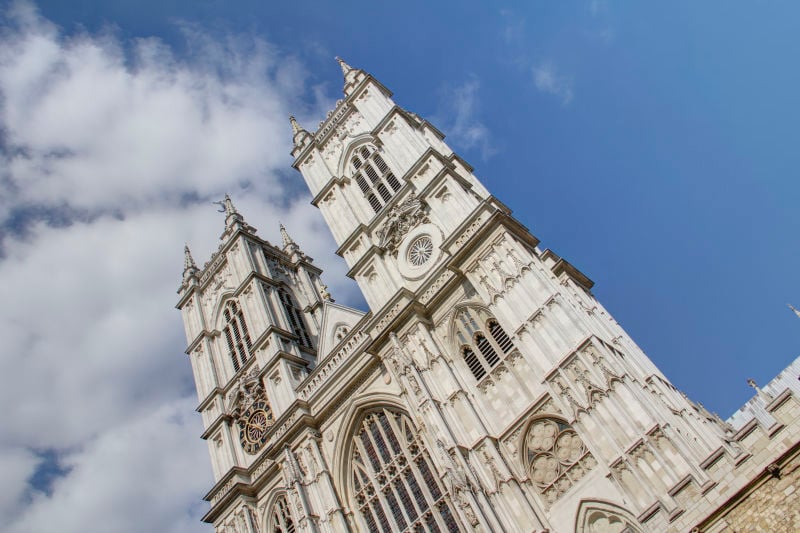Featured in this post
Keep Exploring
London, United Kingdom
Essential London
Explore More
AAlthough London is home to iconic modes of public transit, such as the Tube subway system and those famous red double-decker buses, one of the best ways to explore and discover this historic city is by foot. Luckily, the British capital’s best neighbourhoods are all easily walkable, allowing you to stroll from attraction to attraction — and pop into a local pub afterwards for a pint and traditional fare, like fish and chips.
The Best Walking Neighbourhoods in London – and the Best Things to Do in Each One
Whether you’re looking to experience London’s rich, vibrant history or shop ’til you drop, these are the best walking neighbourhoods in London.
1. Central London
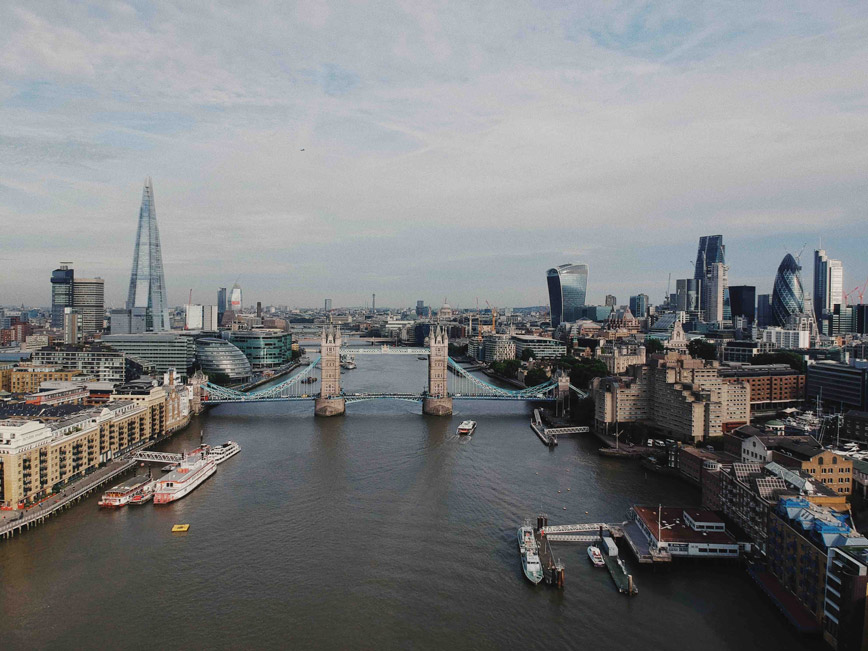 Encapsulating a number of smaller London neighbourhoods like Shoreditch, Notting Hill, and Kensington, the boroughs of Central London have a wide range of districts within walking distance of each other.
Encapsulating a number of smaller London neighbourhoods like Shoreditch, Notting Hill, and Kensington, the boroughs of Central London have a wide range of districts within walking distance of each other.
With its colorful townhouses, outdoor markets, and antique stores, Notting Hill is a lovely place to ramble. You’ll find trendy cocktail bars, cool restaurants, vintage shops, and coffee shops in the hip Shoreditch area. The Kensington and South Kensington areas are hotbeds for Victorian architecture, close to top attractions like the Natural History Museum, Kensington Gardens, Kensington Palace, and the Royal Albert Hall.
If you’ve come to London to see highlights including Big Ben, Tower Bridge, the Tower of London, and Trafalgar Square, Central London is the main area you’ll want to hang out. You can hit these and other area landmarks, like Westminster Abbey, on our London in a Day walking tour.
2. South Bank
Home to the London Eye Ferris wheel, the Hayward contemporary art gallery, the National Theatre, and a lovely walkway along the River Thames with views of Westminster Palace and Big Ben, vibrant South Bank is one of London’s best walkable waterfront districts.
South Bank is also a cultural hub, offering a mix of entertainment, dining, and breathtaking views. Stroll along the scenic riverside and discover lively street performers, pop-up markets, and an array of restaurants, cafés, and bars with stunning Thames-side seating. The area is home to the Southbank Centre, which includes the Royal Festival Hall, the Queen Elizabeth Hall, and the Poetry Library, making it a prime destination for music, theatre, and literary events.
For history enthusiasts, the iconic Shakespeare’s Globe Theatre is just a short walk away, offering world-class performances in an authentic Elizabethan setting. Families can explore interactive exhibits at the SEA LIFE London Aquarium or step into cinematic and television history at the London Dungeon.
At night, South Bank transforms into a beautifully illuminated spectacle, with the city lights reflecting off the water, creating a magical ambiance. Whether you’re looking for culture, entertainment, or a picturesque stroll, South Bank is an essential stop on any London itinerary.
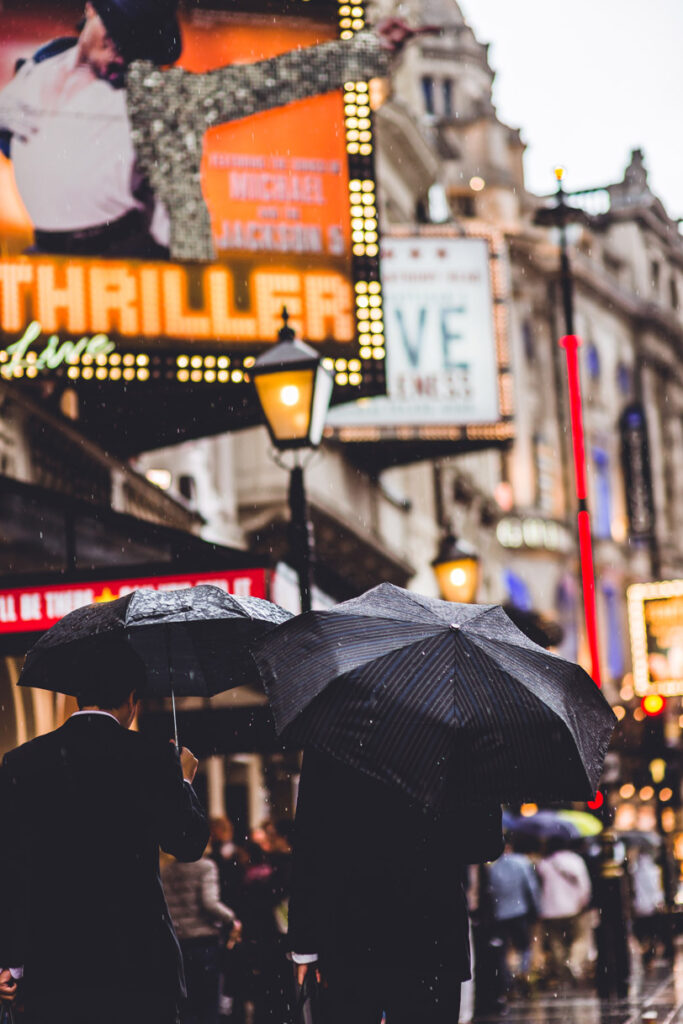
3. West End
Theater buffs should make a beeline for Central London’s West End. Home to 39 different theaters, it’s the city’s theatrical hub, where you can see big-name musicals, live plays, and other performances. It’s also where you’ll find Leicester Square, a bustling square dating from 1670, with movie theaters, restaurants, and statues of famous movie characters.
The West End is not just about world-class theater—it’s also a shopping, dining, and entertainment hotspot. Just a short walk away, you’ll find Covent Garden, a lively area packed with boutique shops, charming cafés, and street performances. For those looking to indulge in retail therapy, Oxford Street, Regent Street, and Bond Street offer everything from high-street fashion to luxury designer brands.
Food lovers will also be spoiled for choice, with a vast array of restaurants ranging from Michelin-starred fine dining to casual eateries serving global cuisines. Chinatown, nestled between Leicester Square and Soho, is a must-visit for authentic Asian flavors, while Soho itself offers trendy bars, eclectic restaurants, and a vibrant nightlife scene.
As night falls, the West End comes alive with dazzling lights and energy. Whether you’re catching a show, exploring its bustling streets, or simply soaking in the atmosphere, the West End is the heart of London’s entertainment scene and a must-visit destination for any traveler.
4. Soho
Along with the neighbouring West End, Soho is London’s main entertainment district, with theaters and jazz clubs, and a major dining and shopping destination.
Beyond its nightlife, Soho has a rich cultural history. Once the epicenter of London’s swinging ’60s scene, the area retains its bohemian charm with independent record stores, quirky bookshops, and unique vintage boutiques. It’s also home to a thriving LGBTQ+ scene, particularly around Old Compton Street, where you’ll find an array of welcoming bars and clubs.
It’s also one of the best London neighborhoods for foodies, thanks to its incredible variety of cuisines and dining experiences, ranging from Chinese to Indian. Those in need of some retail therapy can hit all the stores along Oxford Street and Regent’s Street, two of the main shopping thoroughfares.
5. Westminster
Located along the west bank of the River Thames, the Westminster area has many of London’s top attractions within a few miles of each other.
Start off the day at Westminster Abbey and Big Ben before heading to Buckingham Palace and St. James’s Park. It’s at Buckingham Palace that you can watch the Changing of the Guard and learn about the history of the British Monarchy.
Westminster is also home to the iconic Houses of Parliament, where you can admire the stunning Gothic architecture and even take a guided tour to learn about the UK’s political system. For history enthusiasts, the Churchill War Rooms provide a fascinating glimpse into the underground bunker where Winston Churchill and his government strategized during World War II.
If you’re interested in museums, the area is close to the Tate Britain, which houses an impressive collection of British art from the 16th century to the present day. Just a short walk away, you’ll find Whitehall, lined with historic government buildings, including 10 Downing Street, the Prime Minister’s residence.
6. Southwark
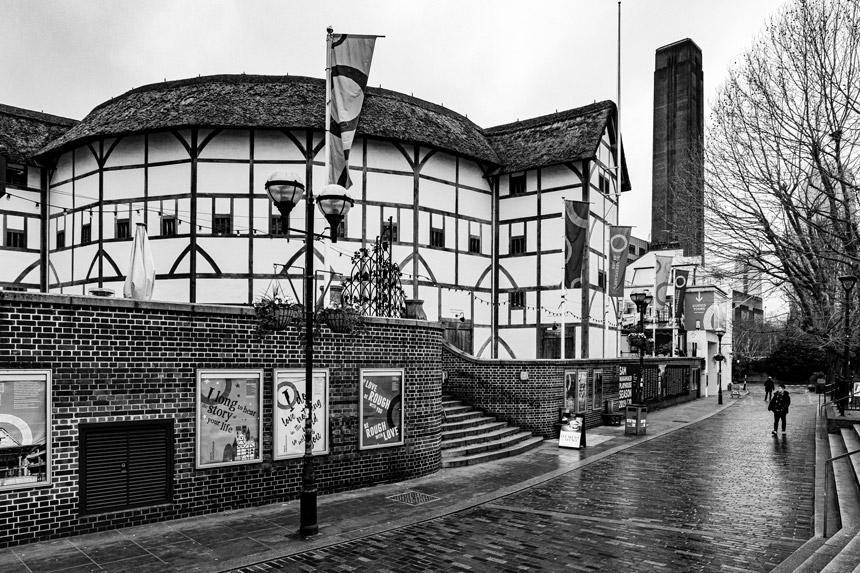 From the dramatic Shard skyscraper to Shakespeare’s Globe, a rebuilding of the Elizabethan theater where the famous playwright wrote and put on his shows, Southwark offers a wonderful blend of London’s past and present .
From the dramatic Shard skyscraper to Shakespeare’s Globe, a rebuilding of the Elizabethan theater where the famous playwright wrote and put on his shows, Southwark offers a wonderful blend of London’s past and present .
Foodies can wander between the stalls at Borough Market, and art lovers will want to set aside at least a few hours to view the contemporary masterpieces at the Tate Modern.
History buffs can explore the fascinating Southwark Cathedral, one of London’s oldest churches, dating back over 1,000 years. Nearby, you’ll find the Golden Hinde, a full-scale replica of Sir Francis Drake’s 16th-century ship, where visitors can learn about the daring voyages of England’s famous explorer.
For those interested in London’s darker past, The Clink Prison Museum offers an immersive experience into medieval crime and punishment. If you’re up for a scenic riverside walk, follow the Thames Path to see stunning views of Tower Bridge and the City skyline.
With its mix of historic landmarks, vibrant food scene, and cultural attractions, Southwark is a must-visit neighborhood that perfectly captures London’s dynamic spirit.
7. Camden
If you’re looking for a more off-the-beaten-path area to explore, away from the bustle of central London, head to Camden Town.
Exuding an edgy, artsy vibe, this cool district is best known for the massive Camden Market—arguably the biggest street market in London, with more than a thousand stalls selling everything from clothing to food. Camden is also one of London’s best neighbourhoods for music, with tons of live-music venues open at night.
Foodies will also find plenty to love in Camden, with an array of international street food stalls offering everything from vegan treats to indulgent burgers. Whether you’re shopping for unique finds, catching a gig, or simply soaking up the alternative culture, Camden offers an eclectic and unforgettable London experience.
Finding Your Footing in London
Each city has its own unique layout, and London is no different. The city is divided into big geographic areas, many named after the cardinal directions, like East London, South London, West London, and North London. Within these larger areas are smaller districts, boroughs, and neighbourhoods.
If you aren’t sure how to get around by yourself, take a guided tour! It’s one of the best ways to see the sights, thanks to a compact city center packed with historic monuments, museums, restaurants, shopping districts, and other attractions.
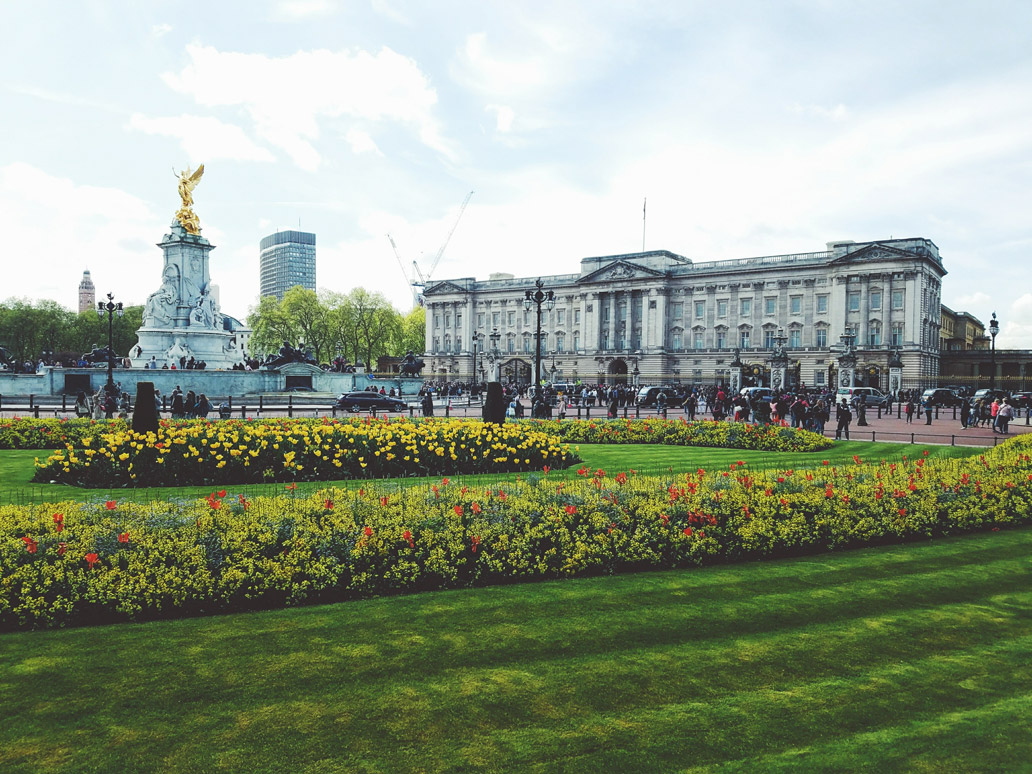
FAQs – Walking London’s Neighbourhoods
Are there guided walking tours available in these neighbourhoods?
Yes, there are numerous guided walking tours available in London’s walkable neighbourhoods. These tours often focus on history, food, street art, and local culture, providing a deeper insight into each area.
What is the best time to explore London’s neighbourhoods on foot?
London’s walkable neighbourhoods can be enjoyed year-round. However, spring and summer offer the best weather for leisurely walks, while autumn provides beautiful foliage and fewer tourists. Early mornings and late afternoons are ideal for avoiding the busiest times.
Are these neighbourhoods family-friendly for walking?
Yes, neighbourhoods like Covent Garden, Notting Hill, and South Bank are very family-friendly, offering attractions and activities suitable for all ages. Wide sidewalks and pedestrian-friendly streets make it easy to navigate with strollers.
How can I reach these walkable neighbourhoods using public transportation?
London’s extensive public transportation network, including the Underground, buses, and trains, makes it easy to reach these neighborhoods. Covent Garden, Soho, Notting Hill, Shoreditch, and South Bank all have nearby Tube stations.
What safety tips should I keep in mind while walking in London’s neighbourhoods?
While London is generally safe, it’s always good to be mindful of your surroundings. Stick to well-lit areas at night, keep your belongings secure, and be aware of traffic when crossing streets. Using a map or GPS can also help navigate unfamiliar areas.
Original Post Date: December 29, 2022
Featured in this post
Keep Exploring
London, United Kingdom
Essential London
Explore More

 Discover Experiences Near Me
Discover Experiences Near Me
